Prevalence and risks of reproductive tract infections among women of urban slums in North India: A cross-sectional study
Mitasha Singh, Shipra Saini, Pooja Goyal, Ekta Gupta, Shweta Goswami
1Department of Community Medicine, ESIC Medical College and Hospital, Faridabad, Haryana, India
2ICMR, National Institute of Cancer Prevention and Research Sector 39, Noida, Gautam Budh Nagar, Uttar Pradesh, India
ABSTRACT
Objective: To identify the prevalence, determinants of reproductive tract infection, and healthcare seeking behavior among ever married women of reproductive age residing in an urban slum of Faridabad,Haryana, North India.
Methods: This community based cross-sectional study was conducted among ever married women aged between 15 and 49 years insured under employees state insurance scheme and residing in an urban slum of Faridabad. Simple random sampling technique was used to interview 149 eligible women using a predesigned structured questionnaire. Study variables included sociodemographic profile, family planning methods, menstrual absorbent usage, and symptoms of reproductive tract infection. Binary logistic regression was used to investigate the determinants of reproductive tract infection.
Results: Of the women, 46.3% had at least one reproductive tract infection or sexually transmitted infection symptom and 28.9% among them sought treatment for the symptom. Vaginal discharge,itching (14.1%) and lower abdominal pain (30.2%) were the major symptoms reported. Non-usage of condoms as contraceptive was significantly associated with a higher rate of symptoms (50.4%vs. 20.0%). Abortion had a significantly high odds of having reproductive tract infection symptoms (aOR 3.71, 95% CI 1.59-8.62;P<0.01). Less frequent change in absorbent during menstruation was also reported to have a higher rate of symptoms. The majority of those who took treatment sought it from government or employees state insurance dispensary. 2% also went to faith healers.
Conclusions: Nearly half of the study population have reproductive tract infection symptom. Abortions and non-usage of condom increase the risk of reproductive tract infection. Menstrual hygiene and condom usage are the significant interventions, which may reduce the prevalence of these symptoms.
KEYWORDS: Reproductive tract infection; Sexually transmitted infection; Migrants; Factory workers; Prevalence
1. Introduction
The history of sexually transmitted infections (STIs) is dated back from fifteenth century when people suffering from syphilis and gonorrhoea were abandoned to use public baths in Europe[1]. STIs,including human immunodeficiency virus (HIV), is still among the five leading causes of health problems in developing countries,leading to considerable morbidity, mortality, and stigma[2].
The World Health Organization (WHO) estimated that in 2020,374 million new cases of curable STIs occurred globally[3], of which 30-35 million episodes of STI [also known as reproductive tract infections (RTI)] occur every year in India alone[4]. The dynamic of epidemiological profile of STIs is different from other diseases in the following aspects: i) their incubation periods are highly variable;ii) the genetic structure of most sexually transmitted pathogens are so diverse that designing a vaccine is not possible for researchers;and iii) these are primarily lifestyle diseases spread by individual’s behaviour that varies considerably within and between social and ethnic groups[1].
The WHO has placed an emphasis on syndromic approach for case measurement and management, particularly in high-prevalence areas having inadequate laboratory facilities, trained staff, and transport facilities[1]. Syndromic diagnosis of STI has its own limitations,so continuous analysis of risk assessment and prevalence-based screening studies are necessary to evaluate and monitor the performance of syndromic management[5].
The beneficiaries insured under employee’s state insurance act are addressed as insured persons or insured women earning less than or equal to 253 US dollar (USD) monthly. They are employed in a factory setting with 10 or more employees. They contribute a portion of their monthly income along with their employer to a corpus fund which provides them cashless medical benefit along with other social and disability benefits, too. These employees are usually migrants subjected to lots of health issues due to their working and living conditions. Rural to urban migration, stress, and anxiety at work place among factory workers lead to ignorance, embarrassment and stigma associated with STIs, which prevents them from seeking medical consultation. Considering the gravity of the problem and paucity of population-based studies in this area, the present study was planned and conducted to estimate the burden of RTI/STI and to identify the spectrum of clinical manifestation among these insured women in reproductive age group residing in an urban slum of Faridabad, Haryana.
Hence, the study aims to determine the prevalence and risks or determinants of reproductive tract infection symptoms among women of reproductive age group residing in an urban slum of district Faridabad and to determine the healthcare seeking behavior of women of reproductive age group (spouse of insured persons or insured women) of urban slum of Faridabad pertaining to RTI/STI.
2. Subjects and methods
2.1. Study design and setting
A community based cross-sectional study was conducted between July 2019 and December 2019 in the urban slum of district Faridabad, Haryana catering to majority of population working in factory settings and earning below 253 USD monthly.
2.2. Study population
Ever married women of reproductive age group (15-49 years age group) who are either spouse of insured persons or are insured women themselves were the study population. Females who were mentally impaired or suffering from gynaecological malignancy at the time of interview were excluded from the survey.
2.3. Sample size
Taking prevalence of any RTI/STI symptoms among women of reproductive age group as 23.3% from NFHS-4 (Haryana)[6], at 7% absolute error and 95% confidence interval, the minimum sample size calculated was 140. To account for non-response rate of 10%,sample size was calculated to be 154. Simple random sampling was used to achieve the desired sample.
2.4. Sampling strategy
The sampling frame was the list of eligible couple register. The study area was also the urban catchment area of the tertiary care center where the study was conducted; hence, the register was available. The list of eligible candidates was extracted from the database – married female in the reproductive age group residing in the field practice area. There were 270 eligible women of which desired sample was selected using the random number table (simple random sampling). The house number was used to select through random number table. One eligible female from each house was recruited for the purpose of the study after taking informed consent till the desired sample size was reached. In case of more than one eligible woman, the one whose date of birth was nearest to the date of interview was selected. In case the eligible woman was employed and not available during daytime, the house was visited again on the day she was available after prior appointment. Even after two revisits if the eligible population was not available then the adjacent house was selected for the same. After conducting the study, complete records of 149 participants were included.
2.5. Data collection
The objectives of the study were explained by the interviewers(the medical social workers and undergraduate medical interns) and informed consent was taken prior to the start of interview from the participants. Data collected during the study were used for academic purposes alone and no personal information of the study sample was divulged to anyone; thus, privacy of subjects and confidentiality of information was maintained and this was explained to the subjects before inclusion.
2.6. Operational definition
RTIs included three types of infection: i) sexually transmitted diseases, such as chlamydia, gonorrhea, chancroid, and HIV;ii) endogenous infections, which were caused by overgrowth of organisms normally present in the genital tract of healthy women,such as bacterial vaginosis or vulvo vaginal candidiasis; and iii)iatrogenic infections, which were associated with improperly performed medical procedures such as unsafe abortion or poor delivery practices[7].
2.7. Study tool
A self-designed, pilot tested, structured questionnaire was introduced after thorough review of literature consisted of socio demographic details; information on presence of RTI/STI symptoms,viz., vaginal discharge, vaginal itching, lower abdominal pain,genital ulcer, burning micturition, dysuria, pain during intercourse;information related to family planning methods used and care seeking behaviour pertaining to these symptoms. The questionnaire was first pilot tested before starting the actual study and pitfalls encountered were revised and modified as per the need of the study.The socio-economic status of study population was calculated using modified B G Prasad classification[8].
2.8. Statistical analysis
The quantitative data were entered in Microsoft excel sheet and analysed using CDC Epi info version 7. The categorical variables were presented using proportions. Continuous variables were presented as median (IQR). Chi square test was applied to test difference between qualitative variables and t test was used to test difference between quantitative variables. The selected determinants with P<0.1 on bivariate analysis were subjected to binary logistic regression analysis with ‘having any symptom of RTI" as binary dependent variable. The statistical significance level was set at 5%.
2.9. Ethics statement
Ethical clearance was obtained from the Institute Ethics Committee(IEC No. 134/A/11/16/Academics/MC/2016/107). Informed consent was taken from the participants. Privacy of subjects and confidentiality of information was maintained.
3. Results
3.1. Prevalence of outcome
The flowchart of study population is shown in Figure 1. The present study revealed that out of 149 women interviewed, 46.3% were found to be suffering from RTI based on at least one of the symptoms. Majority of women (46.3%) complained of abnormal vaginal discharge were followed by lower abdominal pain (30.2%)and vaginal itching (14.1%) in women.
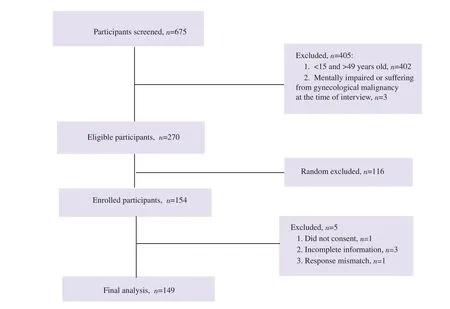
Figure 1. The flowchart of study population screening.
3.2. Sociodemographic profile
The mean age of women with RTI symptom was (29.5±6.1)years. The majority of RTI symptoms were reported in women who attained education of intermediate and above level (39.3%) as compared to illiterate women (45.5%). Unskilled worker reported higher proportion of RTI symptoms (50.0%) as compared to skilled worker or home maker (46.2%). No significant trend was observed with socioeconomic status of the women (Table 1).
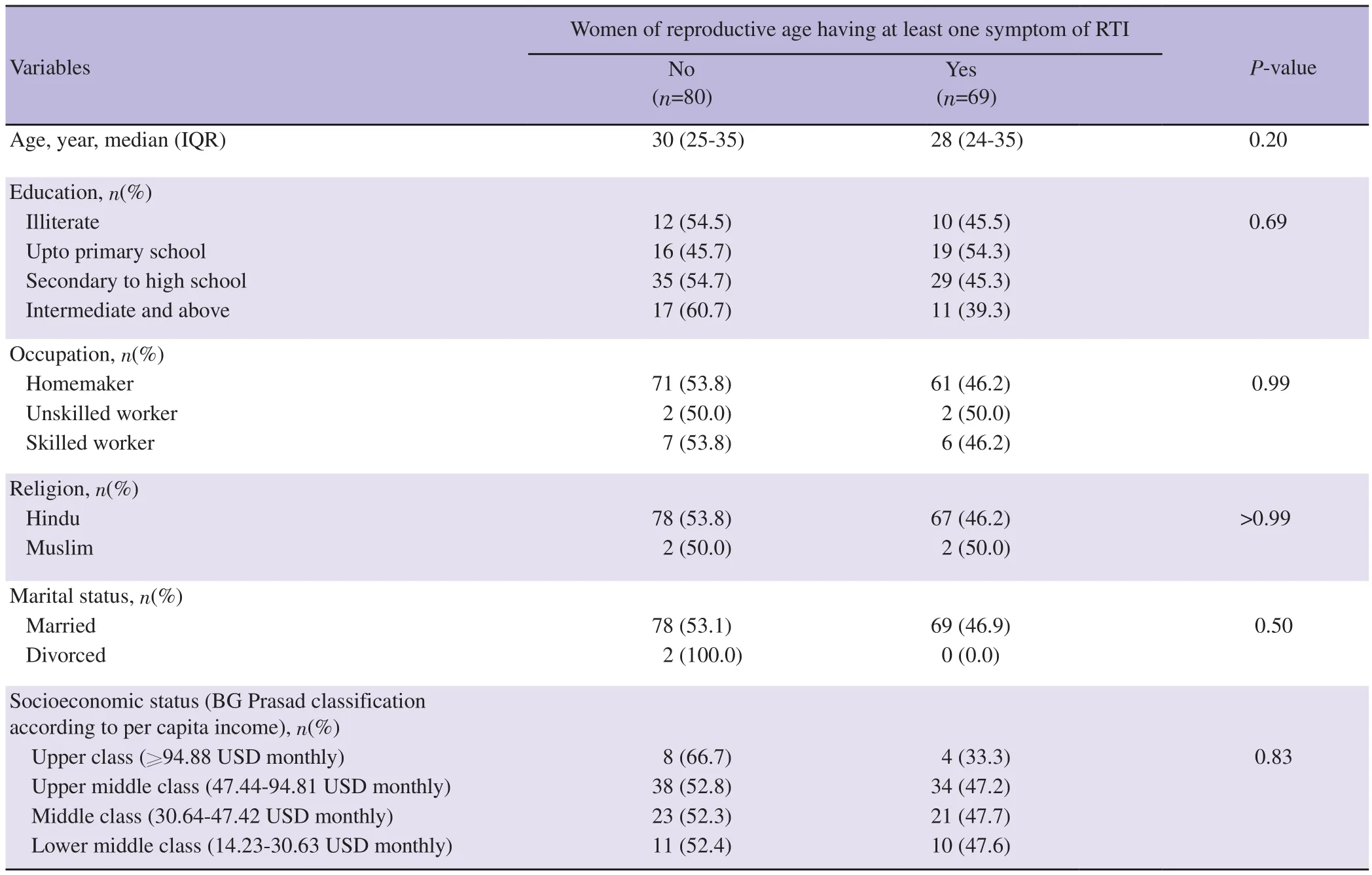
Table 1. Sociodemographic profile of women in the reproductive age group of 15-45 years with reproductive tract infection symptoms.
3.3. Reproductive history and menstrual practices of women in the reproductive age group
Median live births and pregnancies was 3 each in women of reproductive age group having at least one RTI symptoms. Majority of the women with RTI symptoms had history of at least one abortion (66.7%) (P=0.01); all women having spontaneous abortion reported RTI symptoms. Women using both pad and cloth had more RTI symptoms (69.2%) in comparison with women using only pad(42.5%) during menstrual flow. Women using one material/day during menstruation had more chances of RTI (50.0%) as compared to women using more than two material/day having least chances for RTI (33.3%) (P=0.28). Women using intra uterine devices (IUD)and oral contraceptive pills as family planning methods had 62.5% and 57.1% respectively higher proportion of symptoms of RTI.Women not using condom had 50.4% more chances of getting RTI in comparison to condom users (P=0.02) (Table 2).
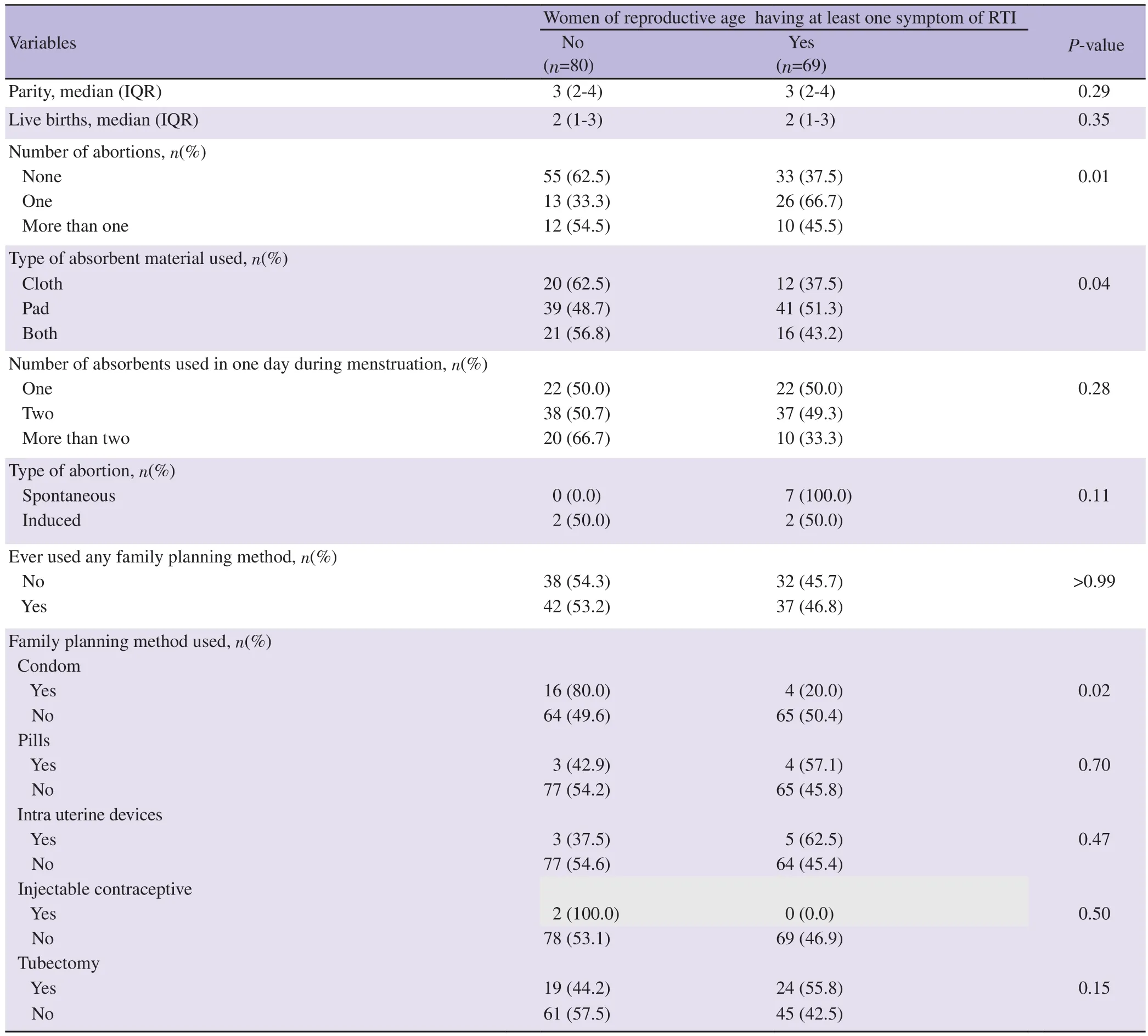
Table 2. Bivariate distribution of gynaecological history of women in the reproductive age group having at least one symptom of reproductive tract infection.
3.4. Healthcare seeking behavior
Overall, 28.9% study population sought care for RTI symptoms.Health care seeking behavior was different in women with different RTI symptoms; women complaining of vaginal itching were more perceptive (66.7%) in taking the treatment for RTI followed by women having pain during intercourse (dyspareunia) with 60% prevalence. Women with complaints of vaginal discharge were least keen to take RTI treatment. Median duration of symptoms were 10 days as found in our study. Median duration after which treatment was sought was 4 days. Partners of only 4 women took treatment as compared to 39 partners of women with RTI symptoms who did not take treatment with their partners (Table 3). The choice of health facility opted by women for the treatment of RTI was maximum opting for Government or Employees State Insurance dispensary for their treatment (75%) followed by private clinic (25%).
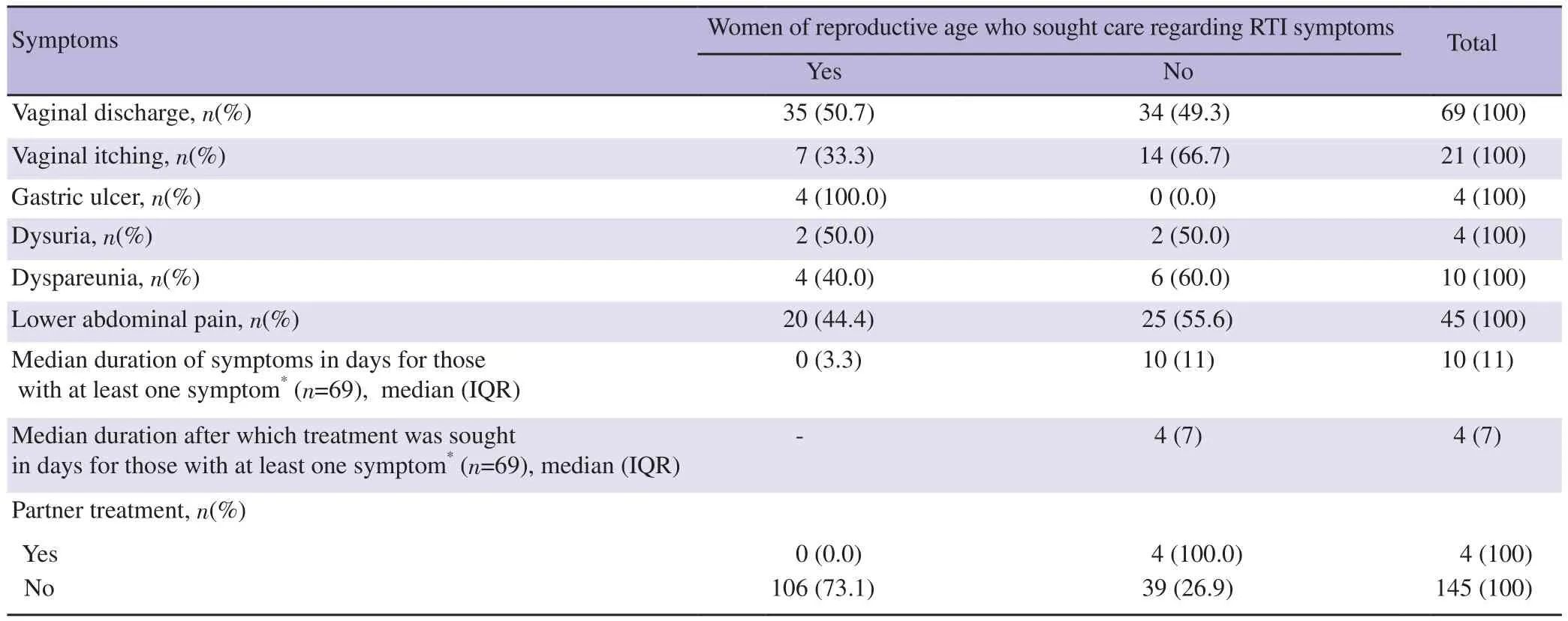
Table 3. Healthcare seeking behaviour of women of reproductive age who sought care regarding reproductive tract infection symptoms.

Table 4. Binary logistic regression analysis to identify determinants of having at least one reproductive tract infection symptom.
3.5. Determinants of RTI among women
Table 4 shows regression analysis identifying independent determinants of women having at least one symptom of RTI.Undergoing abortion and non usage of condom emerged as independent determinants of having at least one symptom. Abortion significantly increased the risk of RTI (aOR 3.71, 95% CI 1.59-8.62;P<0.01). Condom usage significantly reduced the risk of RTI (aOR 0.20, 95% CI 0.06-0.68; P=0.01).
4. Discussion
The current community-based study revealed a prevalence of 46.3% of at least one RTI/STI symptom among ever married women of reproductive age group who are themselves working in a factory or their partner is working and insured under Employees State Insurance Act. However, healthcare seeking for RTI/STI symptoms was observed in 28.9% women only. The overall prevalence in similar community-based studies conducted on textile workers of Surat, Gujarat and urban Ludhiana, Punjab was lower(17.0% & 17.3% respectively) as compared to current study[9,10].The international community also shares the similar data with an estimated 67.6 million prevalent and 26.2 million incident STIs in the United States in 2018[11].
Among the reported symptoms of RTI/STI, abnormal vaginal discharge was reported by maximum number of study participants.Another community-based study of Phrasisombath et al from Lao, Vientiane[12] and the study of Desai et al[9] reported vaginal discharge as the most common symptom. Contrastingly, Phillip et al[10] in their study observed that majority of the participants had pain during micturition (52.8%). Though majority of literature in this domain belongs to hospital-based studies, however, abnormal vaginal discharge remains the most common symptom reported[13-16].
Majority of RTI symptoms were reported in women who were intermediate and above as compared to illiterate women. Similar findings were reported from another community-based study from urban Ludhiana, Punjab[10]. The reason for this discrepancy could be that highly educated women were more aware and open to report her symptoms as compared to less educated ones. However,contrasting results were observed by community-based study from urban Delhi with higher prevalence among illiterate females[17].When other variables were considered in regression analysis, women with education above 12th standard had the least odds of having any symptom.
In the current study, nature of occupation was presented as degree of skillness of work. Unskilled workers had higher proportion of RTI/STI symptoms; skilled and homemakers reported an equal proportion. Somewhat similar findings were reported by Shendre et al in their case control study on role of occupation on STIs[18]. Prevalence was similar across upper middle, middle and lower middle-class socio economic status in the current analysis.Concurrently almost equal prevalence was reported among all income groups in a study by Verma et al, from urban Delhi[17].Contrast findings from a hospital-based study from Lucknow reported higher prevalence in lower middle- and lower-class socioeconomic status according to BG Prasad classification[14].Phrasisombath et al, in their study from Laos and Philip et al, from Ludhiana reported higher prevalence of symptoms in the group with lowest income[10,12]. However, it is worth mentioning that the study population belonged to the community with maximum family income of 253 USD as they were insured under a social security scheme. For the purpose of comparison with literature, the income was subjected to BG Prasad classification (where per capita income was used).
Multipara and multiple abortions were associated with those with at least one symptom of RTI/STI. Hospital-based study from Lucknow, community-based study from urban Delhi[17] and urban Ludhiana[10] also quoted higher prevalence of symptoms in women with abortion and high parity. Multipara is associated with increased chances of STIs, further leading to cancer. Hence, condoms were introduced for dual protection against unintended pregnancy and sexually transmitted diseases. Study conducted in Udupi district reported that only 5% (of the total of 108) of the respondents used condoms while indulging in sex with a new partner at the migrated place[19]. It has been proved in current study that non usage of condoms was a significant risk factor for high prevalence of RTI/STI symptoms. Similar study from Goa reported that condom use and oral contraceptive use were associated with a reduced risk of RTI[20].Abortions are both cause and consequences of STIs. Hence primary healthcare centers are best places to screen the women subjected to abortions for STI symptoms and vice versa. Contraception is a form of behavioral intervention to improve the reproductive health of women. However, male condoms are the most cost effective yet the indirect interventions which can reduce unwanted pregnancies along with reproductive tract infections.
Women using one absorbent (pad or cloth) per day during menstruation had more chances of these infections in the current study as compared to women using more than two absorbents per day. Similar findings were reported in a hospital based crosssectional study from Odisha quoting that bacterial vaginosis was more frequent among women changing absorbents less frequently[21]. Number of absorbents is linked to hygiene of genital area, with less frequent changes in absorbents increasing moisture in area and creating a culture media of various infectious agents. The study population in the current study resided in urban slums where hygiene is a neglected issue.
Verma et al in their community-based analysis reported higher prevalence of RTI/STI prevalence in those not using contraceptives[17]. This contrasted with the current study where there was marginally higher prevalence among any family planning method users as compared to non-users. It has been hypothesized that women using contraceptives may be more sexually active and predisposed to infections. Those using IUD reported a higher prevalence for symptoms. In a prospective study conducted on women in Zimbabwe prevalence of bacterial vaginosis increased significantly in women initiating Cu-IUD use from 27% at baseline,to 49% at 180 days[22]. 28.9% of study population was using permanent sterilisation (tubectomy) and none of the women’s spouses availed vasectomy. However, it was observed in the current analysis that symptom of RTI/STI was higher among women who had undergone tubectomy. Study by Bote et al shows that odds of having RTI among women who had inserted IUD were 2.87 times higher than those not using IUD, while in the current study it was 2.63 times[23].
To interrupt transmission of infection and prevent re-infection,treating sexual partners is an important component of STI case management. However, partners of only 9.3% symptomatic women took treatment. Among 28.9% who sought treatment, three fourth opted for government dispensary or employees state insurance dispensary for treatment and the majority having vaginal itching and dyspareunia sought treatment at health centers. In a study on women working in entertainment sector from Laos[12], 58.5% sought treatment for RTI/STI symptom and study by Phillip et al[10] reported a higher percentage (64.4%). In the current study, it ranged from 49.3% to 66.7% for different symptoms; hence, it was comparable to the above studies. Contrary to the present study, Verma et al[17]in a community-based study reported higher percentage (73%)and Ray et al[16] reported low numbers (50.5%). The current study population had access of employees state insurance dispensary nearby, but still 2% preferred faith healers for treatment. Faith healers also known as traditional healers use witch craft or herbs or spiritual healing techniques for variety of disorders. Probably, for those who reported, faith healers were their first point of contact for primary care. Religious custom, and personal belief are still stronger motivating factors behind choice of healthcare[24]. This may be under reported too, as the participants were aware about interviewer being a representative of the nearby employees state insurance scheme dispensary, hence giving a socially desirable response.
There are some limitations in the study. Since it was a crosssectional study, no follow up was done on the women who were seeking treatment or were motivated to seek the treatment through our study. We did not perform any laboratory investigation tests on women complaining of STI/RTI symptoms to know the exact prevalence of the disease, as the self-reported morbidity alone cannot be used to measure the burden of disease in the community.
In conclusion, the prevalence of RTI/STI among insured women of reproductive age group was as high as 47%; however, only 29% sought treatment for their symptoms. Risk factors significantly responsible for these infections were abortions, and non-usage of condoms during coitus. It is desirable to amplify awareness about RTI/STI, augment menstrual hygiene practices among women from marginalized section and intensify practice of condom usage for couples. It is highly recommended that insured women should get menstrual pads at their work place or through employees state insurance hospitals on monthly basis in sufficient quantity, as using cloth during menstrual flow was found significant determinant for reproductive tract infections. Awareness camps for using condoms,practicing menstrual hygiene and adopting safe abortion practices is time tested, low cost and impactful activity that will help improve reproductive health of insured women.
Conflict of interest statement
Authors declare that there is no conflict of interest.
Acknowledgements
Authors wish to express gratitude to Dr Jyoti Yadav and Dr Prabhat Ranjan, Medical Officers who helped in data collection. We also thank the medical social workers of the department in helping us conduct household survey and the study population in cooperating to participate in the study.
Funding
The study received no extramural funding.
Authors’ contributions
Ekta Gupta and Mitasha Singh conceptualized the study and designed the methodology. Pooja Goyal conducted the literature review. Shweta Goswami and Shipra Saini conducted data collection and data analysis. Mitasha Singh conducted the statistical analysis.Ekta Gupta prepared the first draft. Pooja Goyal and Shipra Saini reviewed and edited the final manuscript.
Publisher’s Note
The Publisher of the Journal remains neutral with regard to jurisdictional claims in published maps and institutional affiliations.
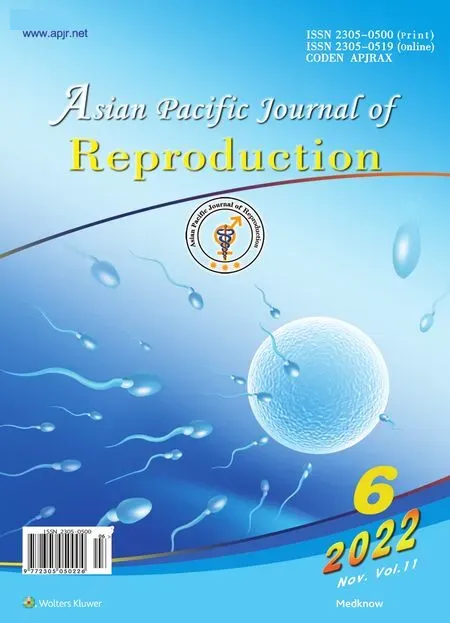 Asian Pacific Journal of Reproduction2022年6期
Asian Pacific Journal of Reproduction2022年6期
- Asian Pacific Journal of Reproduction的其它文章
- Ovarian hyperstimulation syndrome following the use of GnRH agonist trigger of final oocyte maturation and freeze-all strategy: A case report and review of the literature
- Exogenous gonadotropin releasing hormone (GnRH) modulates scrotal and testicular biometrics, libido, endocrinological and heamatological profiles in Ganjam goat under humid tropical coastal ecosystem of Odisha
- L-arginine alleviates postmenopausal complications in female rats by stimulating ovarian dopamine beta hydroxylase
- Predictors of readiness for discharge in mothers of preterm infants: The role of stress,self-efficacy and perceived social support
- Awareness about transmission and preventive measures of COVID-19 from mother to child: A cross-sectional study among pregnant women
- Clinical pregnancy rate of women with unexplained infertility with or without cervical mucus aspiration before intrauterine insemination: A randomized controlled trial
